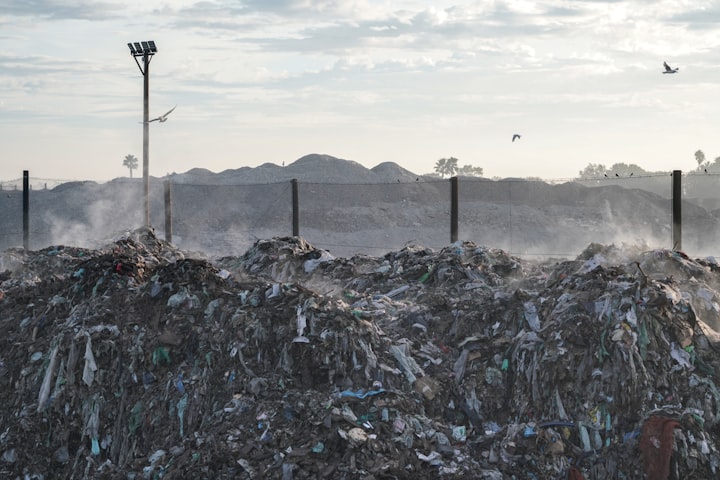Where Do Lithium-Ion Batteries Go When They Die? You’re Not Going to Like the Answer
There’s an inconvenient truth behind the lithium-ion batteries that power our modern, low-carbon lives. And it’s terrible news for the planet.

So I find myself sitting at my desk surrounded by lithium-ion (Li-ion) batteries. There’s one in the laptop I’m currently writing on. There’s another in the smartphone on the desk beside me, and another in the tablet that I bought for work but actually use to watch YouTube videos.
I shouldn’t forget the bank of Li-ion batteries that powers my home’s off-grid solar system. And, if I could afford it, there would be more Li-ion batteries in the electric vehicle (EV) that would be on display in my driveway.
For this, I would have given myself a self-satisfied pat on the back as a dedicated warrior in the ‘electrify everything’ movement. That’s until I asked myself – and Google – what actually happens to all these Li-ion batteries when their useful life is spent?
Let me tell you, it’s not pretty reading. But it’s a question we can’t afford to duck. Particularly considering that EVs are projected to account for more than two-thirds of all passenger vehicle sales by 2040.
Add rapidly increasing demand for commercial Li-ion batteries to power solar- and wind-dependant electricity grids, then throw in our seemingly unquenchable thirst to update to the new iPhone whatever every time Tim Cook sneezes – and it’s easy to see why the market for Li-ion batteries is forecast to top $100 billion by 2025.
The real cost of lithium-ion batteries
The problems begin in the lithium and cobalt mines – two key components used in Li-ion batteries. Around 2.2 million litres of water is needed to produce one ton of lithium. To put that into perspective, replacing the 1.5 billion petrol-powered vehicles currently clogging the world’s highways would require around 15 million tons of lithium. That would take 33 trillion litres of water to produce, equivalent to about 8.25 years' worth of global water usage.
Open-pit and strip mining for lithium can also lead to habitat destruction, deforestation, and disruption of local ecosystems, particularly in ecologically sensitive areas. And chemicals used in lithium extraction, such as acids and solvents, can potentially contaminate soil and water if not properly managed.
Some lithium extraction methods, such as brine evaporation and mineral processing, can also be energy intensive – and the reliance on fossil fuels for this energy can contribute to greenhouse gas emissions that exacerbate climate change.
Then there’s cobalt mining. Much of the world's cobalt comes from the Democratic Republic of Congo (DRC), where there have been concerns about unethical mining practices, child labour, and dangerous working conditions – to say the least. Traditional cobalt mining methods can also result in soil erosion, deforestation, and release heavy metals and toxic elements into the environment.
And the story doesn’t get much better when we move into the manufacturing stage. Heats between 800 to 1,000 degrees Celsius are typically required to make Li-ion batteries, which typically requires the burning of fossil fuels. Around 77 percent of the world’s Li-ion batteries are made in China where coal is the major energy source.
The toxic legacy of lithium-ion batteries
So while mining and manufacturing Li-ion batteries comes with a hefty carbon footprint, it’s what happens at the end of their useful life that is perhaps even more concerning.
One of the most well-known dangers of Li-ion batteries is thermal runaway. This occurs when the battery's internal temperature rises uncontrollably, often due to factors like overcharging, short-circuiting, physical damage, or manufacturing defects. As the temperature increases, the battery can release gases, expand, and even rupture, leading to the risk of fires or explosions.
So if Li-ion batteries are damaged during disposal or recycling, it follows that thermal runaway can cause them to ignite or explode. And even undamaged batteries can release toxic chemicals such as mercury, cadmium, lead and nickel as they deteriorate.
That’s really bad news considering only around 9 percent of lithium-ion batteries are currently recycled. The remaining 91 percent are sent to landfill where they begin their long, slow poisoning of the soil and water table as they degrade over time.
But recycling Li-ion batteries is problematic too. Batteries are typically dismantled or shredded, then melted down or dissolved in acid. Chemical compounds are then salvaged from the smouldering goo left behind.
In addition to the risk of triggering thermal runaway during the recycling process, the chemicals and solvents used can have environmental and health implications if not managed properly. Melting Li-ion batteries can release toxic fumes such as Sulphur Dioxide (SO2), Carbon Monoxide (CO), Volatile Organic Compounds (VOCs) and Fluorine Compounds that can be harmful to both human health and the environment.
A tipping point for our low-carbon future
Considering that around 11 million tons of Li-ion batteries are expected to reach the end of their service lives between now and 2030 – and most car manufacturers only guarantee EV batteries for eight years or 160,000km – the size of this problem is only going to grow over time. So solving the safety challenges and environmental impact of disposing of and recycling Li-ion batteries requires urgent attention.
As the use of Li-ion batteries continues to grow, the capacity to safely recycle them at a large scale needs to be developed. This requires attention to everything from establishing efficient – and safe – collection systems for spent Li-ion batteries, to the development and introduction of universal recycling regulations, and advances in battery design to enable more sustainable recycling practices.
Our low-carbon future may depend on getting this right.
Vocal readers claim your free subscription to THE MALCONTENT for more articles like this.
About the Creator
Shane Peter Conroy
Shane is just another human. He writes, he paints, he reads. He once got his tongue stuck to the inside of a freezer. Actually, he did it twice because he thought the first time might have been a fluke. https://themalcontent.substack.com






Comments
There are no comments for this story
Be the first to respond and start the conversation.